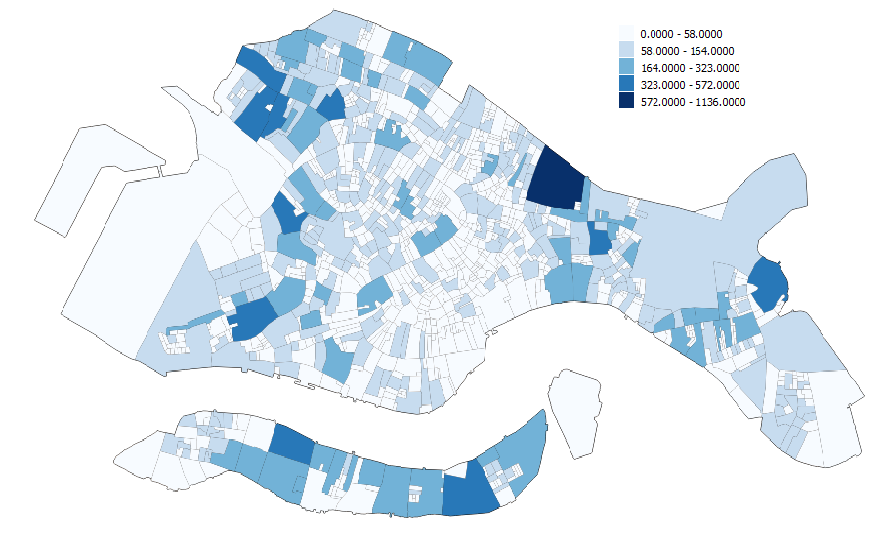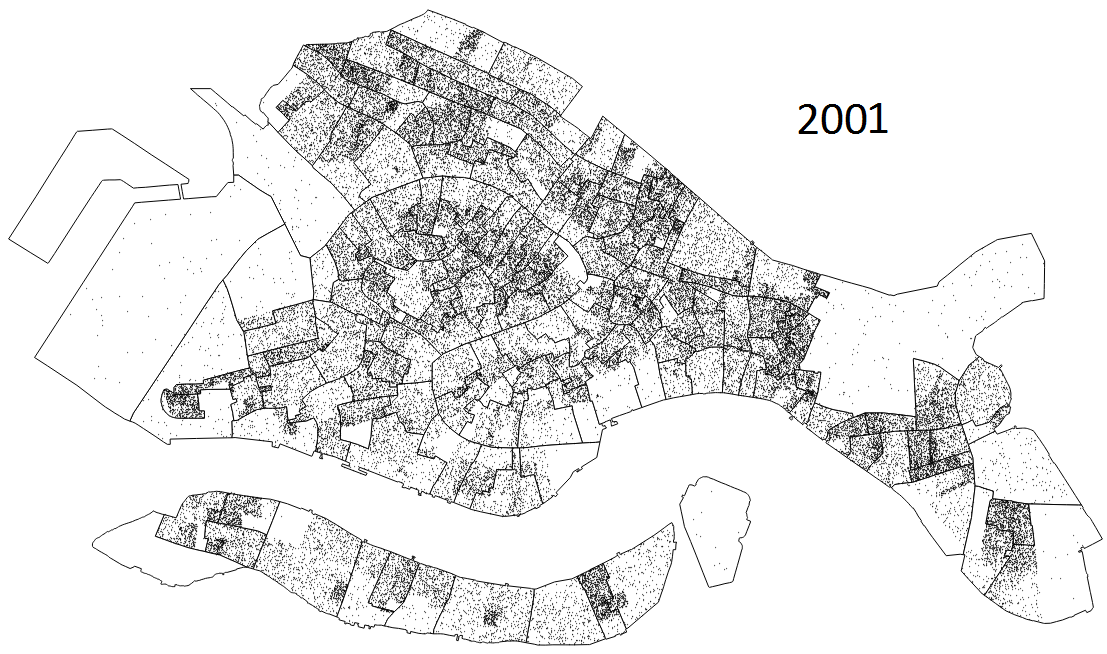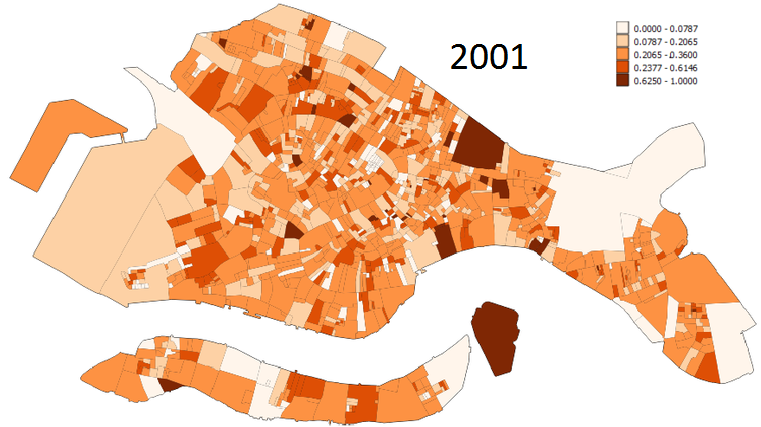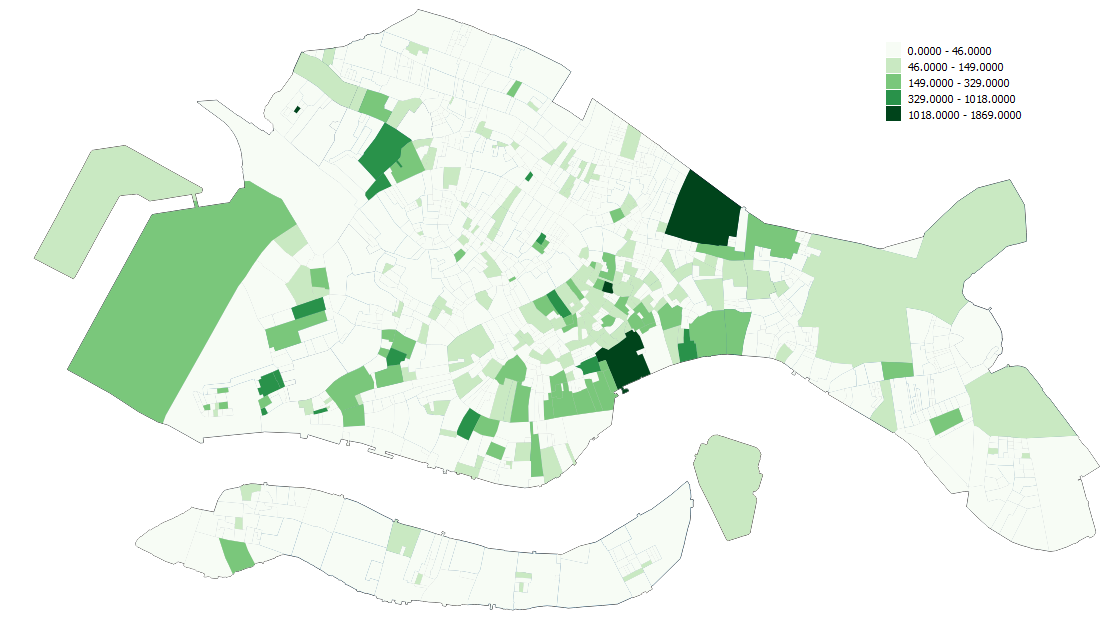Census 2001
This images are graphical representations of the population density of the city of Venice in the year 2001, broken down by census tract, as carried out by the ISTAT, or Istituto nazionale di statistica (in English: Italian National Institute of Statistics).
Census by Tract
The census is broken down into over one thousand subdivisions, each of which is a distinct geographical area below. Statistics are kept with the census tract at the smallest unit of measure, and as a result, the graphics below show these discrete chunks, coloring each one according to the appropriate statistical range.
Population
The key here indicates the number of persons living in the given census tract. It is not scaled by area.
The dot map shown above displays one dot for every resident, placed randomly within the census tract of their dwelling.
Elderly Population
The key here indicates the proportion of persons living in the given census tract who are elderly (65+ years).
Working Population
The key here indicates the number of persons working in the given census tract. It is not scaled by area.
Characteristics of the 2001 Census
The 2001 Census continues to provide signs of an aging, sometimes fleeing, population. Some of the same trends remain, but others have become more severe.
Population
The center of Venice, particularly areas near the Piazza San Marco, an area popular with tourists and vulnerable to floods, is very sparsely populated, the residential buildings seemingly having given up in favor of allowing business and retail dominion over the area. Population remains notably higher nearer to the edges of the island, but the only census tract with over 572 residents is in northern Cannaregio, near the Ospedale SS. Giovanni e Paolo.
Elderly Population
The proportion of elderly remains mostly static compared to the 1991 Census, with some census tracts seeing the proportion of elderly citizens rise and others seeing it fall. Particularly near the center of the island, the various tracts seem to have shuffled about rather than changed significantly. The most notable exception is is northern Cannaregio, where once again the Ospedale seems to be an attractive force. It has, by far, the largest census tract in which the elderly make up a majority of the population.
Working Population
The 2001 Census data included a section on the place of work of the citizens of Venice. Notable areas of high worker population include the Ospedale and the Piazza San Marco, and in fact the entire area around the Piazza is is an island of moderate to high worker population in the center of the city, perhaps reflecting the large number of tourist attractions in the vicinity.
While there are some tracts with a high working population scattered throughout Venice, it would seem that in most cases, a high residential population and a high working population are mutually exclusive. One particularly outstanding example of this apparent relationship is the island of Giudecca, which is just south of the main island. It is fairly heavily populated, yet barely anyone works there; this would seem to imply that the majority of residents take the boat over to the main island of Venice on a daily basis. The extent of this dependence on public transit and the particular pressures it places on the system may merit further study.
See Also
External Links
Bibliography
- Italy. Istituto nazionale di statistica. "ISTAT". 2001 (data collection).



